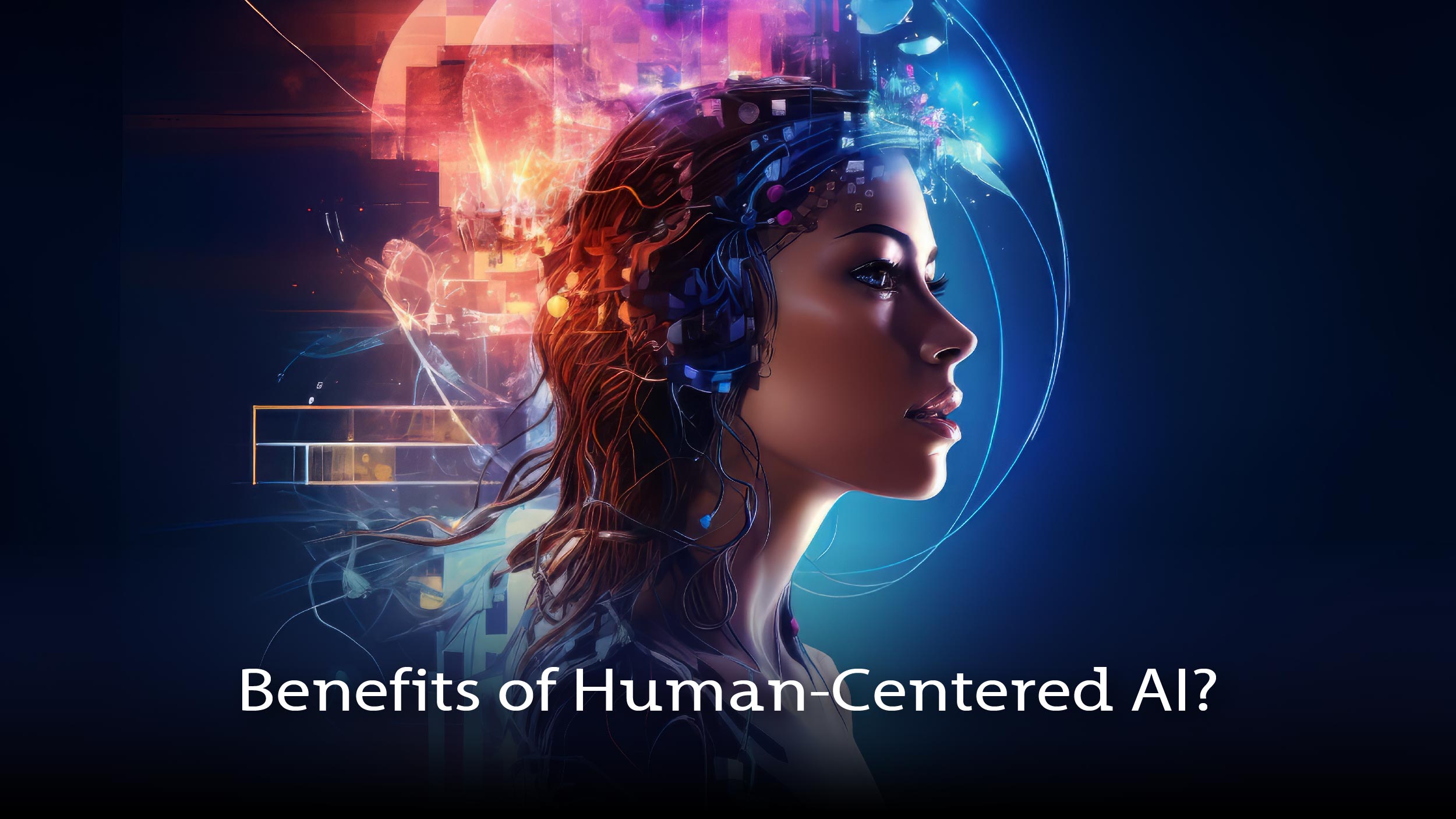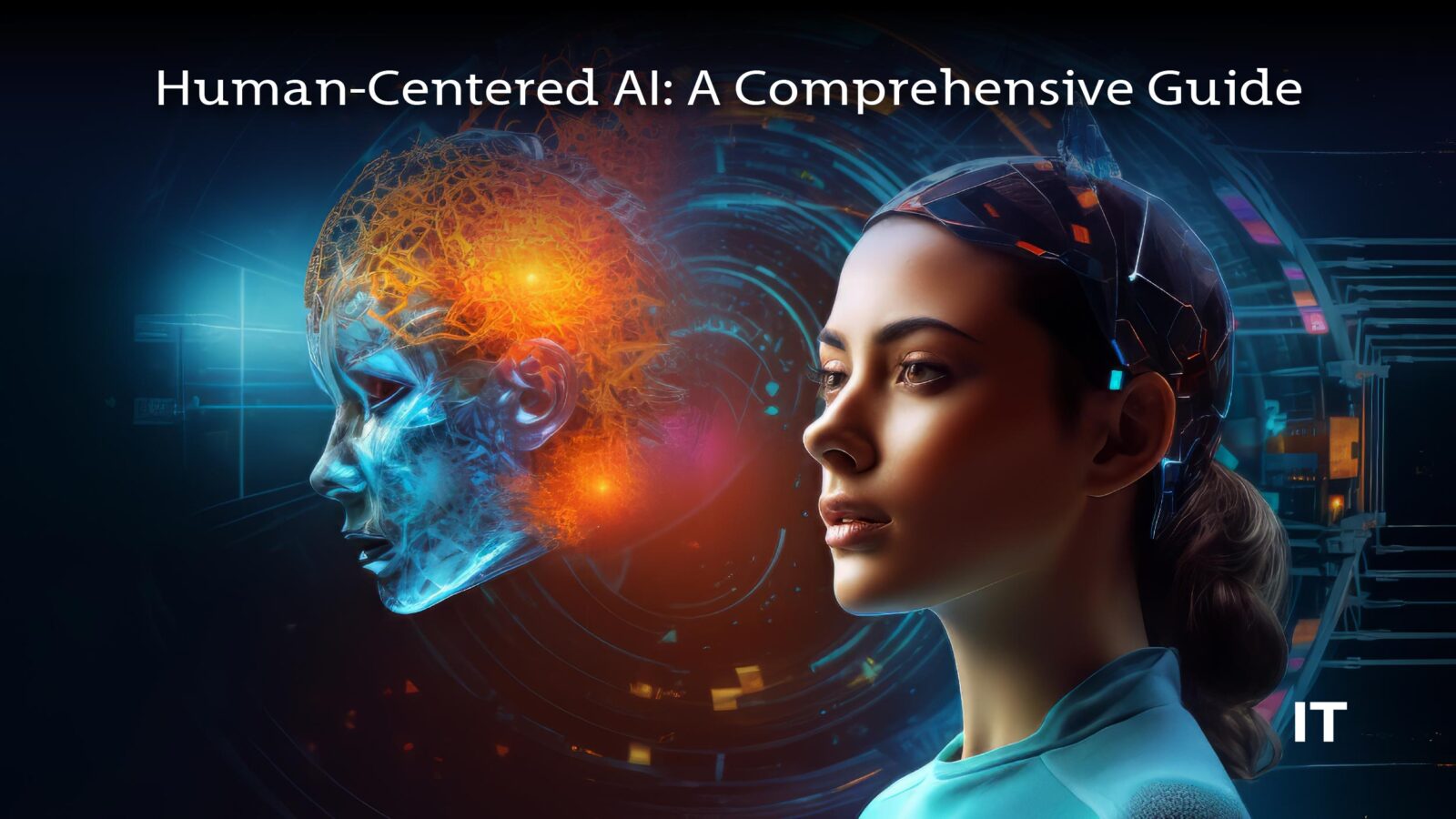In a world where artificial intelligence (AI) is rapidly advancing, there is a growing concern about the potential negative impact of AI systems on society. The problem lies in the potential detachment of AI from human values, ethics, and the overall well-being of individuals. As AI becomes increasingly integrated into various aspects of our lives, it is crucial to ensure that it remains aligned with human needs and aspirations.
This is where human-centered AI emerges as a solution. By placing humans at the forefront of AI development and deployment, human-centered AI prioritizes ethical considerations, user experiences, and societal impact. It aims to create AI systems that enhance human capabilities, foster collaboration, and empower individuals. This article sheds light on this revolutionary concept.
What is Human-Centered AI?
An emerging field of study called “human-centered artificial intelligence” (HCAI) aims to develop AI systems that enhance rather than replace human capabilities. In order to ensure that artificial intelligence fits our needs, operates transparently, produces fair results, and respects privacy, HCAI works to maintain human control. Human-centered AI pushes the limits of existing artificial intelligence solutions to close the gap between machines and people by developing machine intelligence to comprehend human language, emotion, and behavior.
Business-wise, human-centered AI solutions make use of human science and qualitatively rich data to comprehend the more profound demands, goals, and motivations that underlie consumer behaviors in your market. Advanced contextual analytics deliver precise behavioral insights by combining data and human science. Patterns emerge when analytics are applied to human behaviors and decisions.
Data and human science are combined in these contextual analytics to provide significantly better, more individualized client experiences. Companies may create clear, educated business strategies when they are fully aware of what their customers want and expect.
Also Read: 9 Top Data Science Tools for Beginners in 2024
Benefits of Human-Centered AI?
 Human-centered AI brings forth various advantages that make it a valuable approach in the realm of artificial intelligence. By giving importance to human input and collaboration, AI seeks to boost human capabilities instead of substituting them. This strategy allows businesses to make more informed decisions, follow ethical behavior, and efficiently expand their range of products and services. Sectors like healthcare have already experienced the efficiency and enhanced experiences facilitated by human-centered AI. By acknowledging humans as the central focus of design businesses, they can harness the strengths of both humans and machines, resulting in more accurate algorithms grounded in human values.
Human-centered AI brings forth various advantages that make it a valuable approach in the realm of artificial intelligence. By giving importance to human input and collaboration, AI seeks to boost human capabilities instead of substituting them. This strategy allows businesses to make more informed decisions, follow ethical behavior, and efficiently expand their range of products and services. Sectors like healthcare have already experienced the efficiency and enhanced experiences facilitated by human-centered AI. By acknowledging humans as the central focus of design businesses, they can harness the strengths of both humans and machines, resulting in more accurate algorithms grounded in human values.
How Can We Ensure that AI Systems Prioritize Human Values and Ethical Considerations?
A multifaceted strategy is needed to address the challenging problem of ensuring that AI systems prioritize human values and ethical issues. Here are various methods for achieving this:
- Creating ethical AI frameworks: Creating ethical frameworks that direct the creation and application of AI systems is one strategy to guarantee that AI systems prioritize human values and ethical issues. These frameworks ought to put human welfare first and encourage openness, responsibility, and justice in AI systems.
- Fostering diversity in AI system development: It’s crucial to make sure that AI systems are developed in an inclusive and varied manner, as this can help to reduce biases and guarantee that AI systems are designed with a variety of viewpoints in mind. This can be accomplished by supporting diversity in the AI workforce and encouraging underrepresented groups to participate.
- AI system testing and auditing regularly: Testing and auditing AI systems regularly can help spot any biases or potential ethical issues. This can aid in ensuring that AI systems are accountable, transparent, and consistent with human values.
- Education and awareness: It is essential to raise awareness of AI systems’ possible ethical issues to ensure that AI systems place a priority on human values. We may cultivate a culture of moral AI development and use by increasing knowledge of AI ethics and incorporating the general public into AI discourse.
- Collaboration amongst stakeholders: It takes cooperation between stakeholders, including developers, politicians, regulators, and the general public, to ensure that AI systems prioritize human values. Stakeholders can detect possible ethical problems and provide solutions that put human values first by cooperating.
Ensuring good AI ethics are created and utilized in a way that prioritizes human values by creating ethical frameworks and supporting diversity in AI development, fosters collaboration among stakeholders.
Recent Innovations in Human-Centered Artificial Intelligence
 There are several innovations in the field of human-centered AI, some of which are:
There are several innovations in the field of human-centered AI, some of which are:
- Explainable AI (XAI) seeks the goal of rendering AI models transparent and interpretable so that people may comprehend the rationale behind a particular choice and the process by which the model arrived at that choice.
- Collaborative AI: By assisting humans in activities like picture classification, data annotation, and decision-making, collaborative AI aims to improve human capabilities.
- Ethical AI: Ethical AI puts human values first in the creation and application of AI systems. This includes taking into account concerns like privacy, bias, and the social impact of AI.
- Human-in-the-loop AI: This type of AI involves human supervision of AI systems, with humans in charge of keeping an eye on and, if required, correcting AI judgments.
- Adaptive AI is a technique where AI models are created to adjust to the needs, preferences, and behaviors of specific people.
Overall, these developments seek to develop more open, responsible, and inclusive AI systems that give human values and experiences a priority.
IT Giants and the Race Toward Human-Centered AI
Numerous companies are racing in the game to provide the best, close-to-perfect human-centered AI. Here are the three prominent examples:
Google: Google has been focusing on creating explainable AI models and encouraging the moral application of AI. They have also established ethical guidelines for the creation and application of AI. They have created several tools that help illustrate how AI models make decisions, such as the Model Cards Toolkit and the What-If Tool.
Microsoft: Microsoft has been attempting to create artificial intelligence (AI) systems that are usable by those with limitations, such as its Seeing AI app, which uses computer vision to help the blind. Additionally, they have a program called AI for Accessibility that offers financing and technical assistance to programmers creating AI solutions for people with impairments.
IBM: IBM has created a toolbox called AI Fairness 360 that assists in identifying and reducing bias in AI models. They have also been focusing on creating AI models that are comprehensible and encouraging the ethical application of AI. IBM has also collaborated with several organizations to employ AI for social benefit and to address societal issues.
Overall, these businesses are focusing on creating and advancing human-centered AI by emphasizing moral issues, encouraging accountability and openness, and creating AI solutions that advance society.
End Note
Human-centered AI represents a paradigm shift in the development and deployment of artificial intelligence. By placing humans at the center of AI systems, this approach prioritizes ethical considerations, user experiences, and societal impact. Human-centered AI not only aims to enhance human capabilities but also to foster collaboration and empower individuals. By designing AI systems that align with human values and needs, businesses can build trust, ensure fairness, and create more inclusive and beneficial technologies. As AI continues to evolve, embracing a human-centered approach becomes imperative in shaping a future where AI works harmoniously with humans for the betterment of society.
































